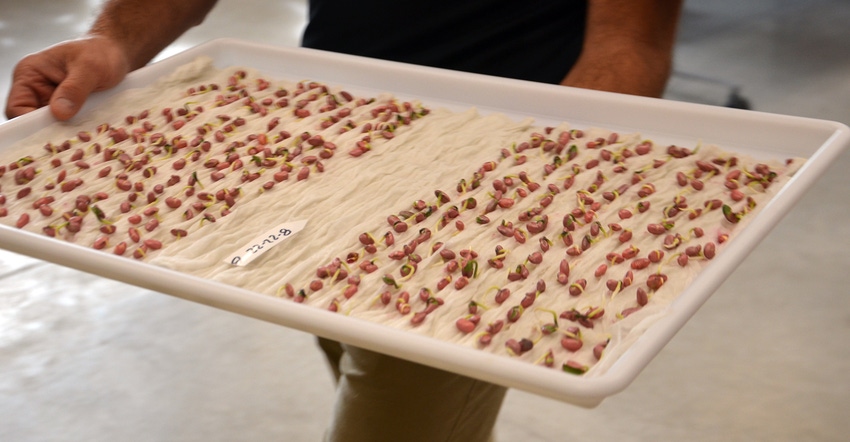December 20, 2022

Seed tags aren’t just decoration. A seed tag is a legal document that carries important information. Read tags carefully so you know how to manage your fields.
For seed traveling from state to state, Federal Seed Act requirements must be met. State laws also apply and may vary by state. Seed tags, at a minimum, contain this information:
Seed lot number. This is used for permanent identification and to track seed lots.
Kind of crop. Common crop names appear, such as corn or soybeans.
Germination. A warm germination score must be stated, plus date of test. Keep reading for more discussion of germination testing.
Origin. Most states require listing where seed was grown.
Percent pure seed. This is the number of seeds by weight for each variety, specifying the name or number of the variety included. If no variety is claimed, then VNS for “variety not stated” appears. More of an issue with cover crop and grass seed, VNS varieties may be much cheaper but could include seed not adapted to your area.
Other crop seed. This includes unnamed varieties of crop seeds. Again, this applies more to grass seeds. This can be up to 5% by weight.
Weed seeds. This is percent by weight of the seed bag, which contains either noxious weeds and/or other weed seeds. If noxious weeds are present, usually strict limits are imposed as tolerance limits. Noxious weeds and reporting requirements vary by state.
Inert matter. This includes amount of non-seed materials by weight. Soil particles, broken seeds and cob pieces are included.
Seed treatments. Treatments applied must be noted on the tag, including seed coatings and inoculants. Seed laws are far too complicated to explain completely in this article. Check with your state seed commissioner.
Management clues
Is the hybrid you’re planting tolerant to both glyphosate and glufosinate? The best way to make sure is to read all seed tags. With so many traits and so many combinations, the only way you will know for sure is to read labels.
If you’re growing non-GMO hybrids, you won’t see all those tags. Make sure seed you plant is non-GMO, so you get your premium. Most locations receiving non-GMO grain test for GMOs.
Germination scores
Most hybrid seed corn tags are marked for 95% germination. That’s a warm germination score and tells you what percent of seed should grow when the temperature is warm. The seed may actually germinate at 99% or even 100%. But since the minimum requirement is 95%, that’s what’s marked on the tag.
Seed companies aren’t required to report cold germination scores. However, most companies run these tests. Often, testing is through a third party. However, some companies may perform their own cold tests. There are no industry-wide standards for cold scores. Common practice is to keep these results internal, and not publish or share them with customers.
However, most seed reps should be willing to share advice with you based on cold germ testing. This becomes especially important if you’re planting early. Don’t be afraid to ask for information about cold vigor.
Nanda is director of genetics for Seed Genetics Direct, Jeffersonville, Ohio. Email [email protected] or call 317-910-9876. Please leave a message.
About the Author(s)
You May Also Like






